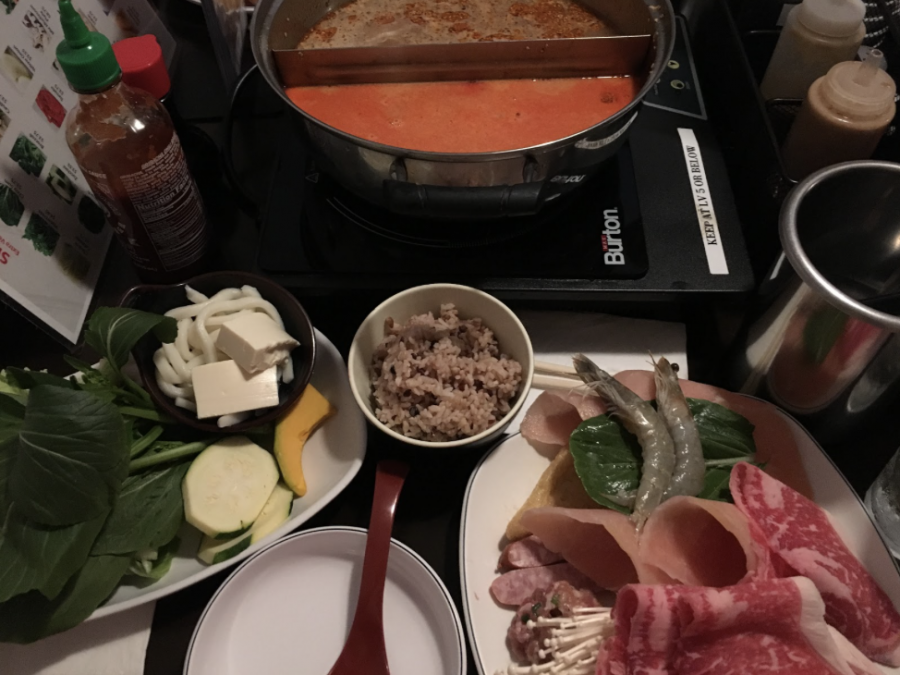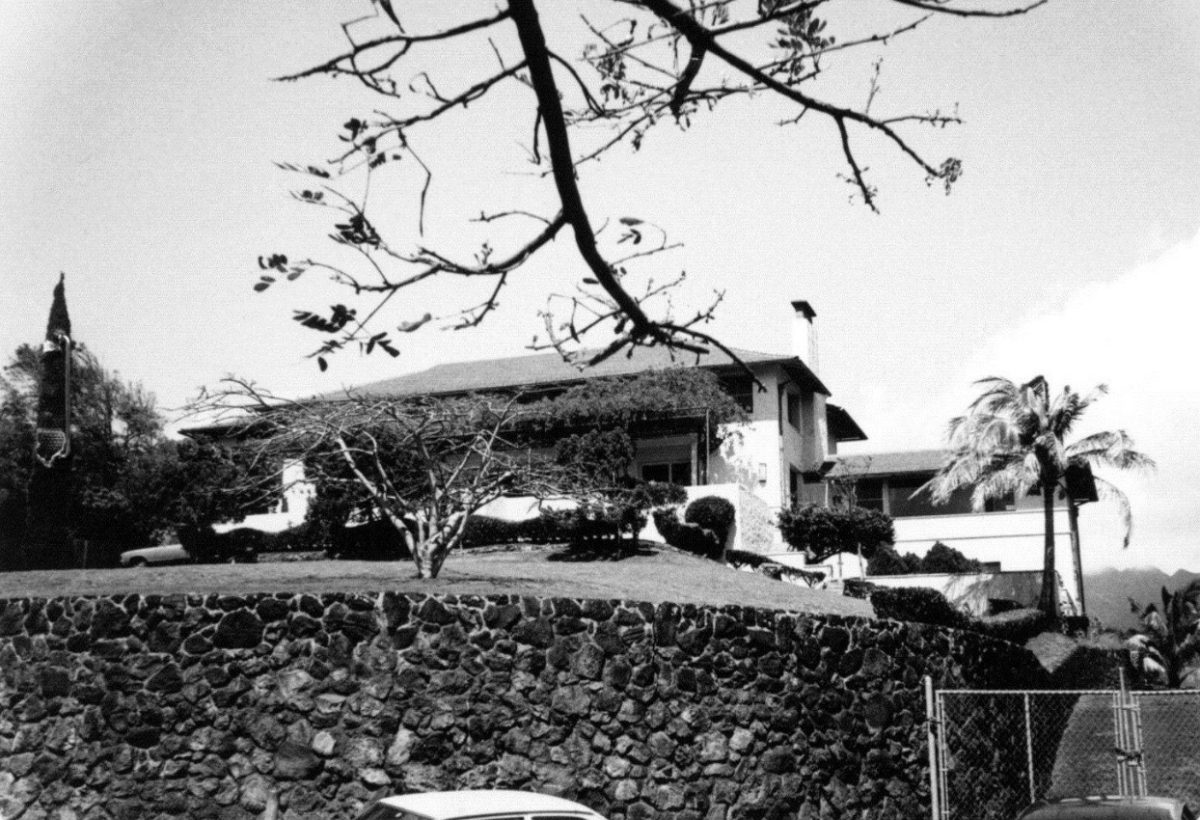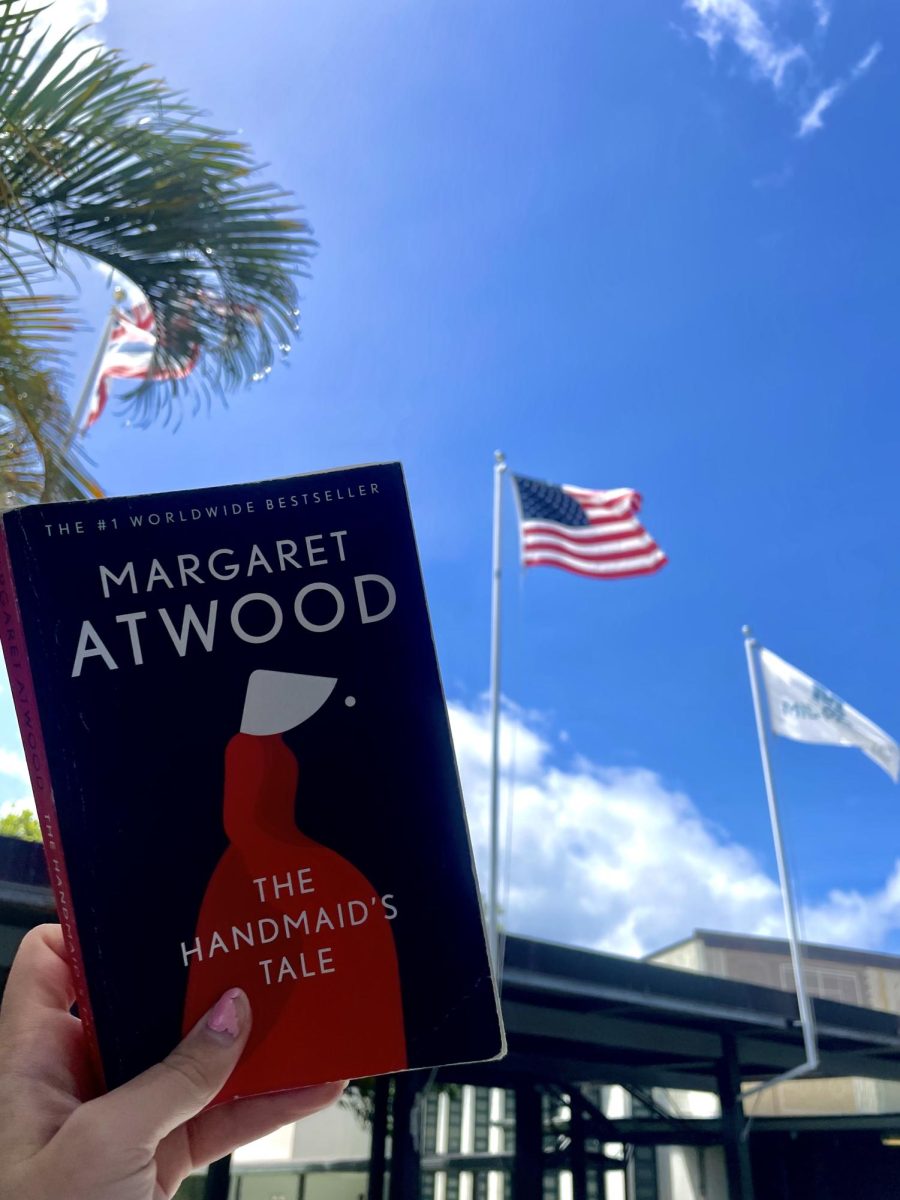Restaurant Review: Asuka
March 8, 2019
Tired of the same old instant ramen? Looking for a bit of spice in your life? Well look no further than Asuka, a quaint Japanese “nabe” restaurant that specializes in a “do-it-yourself” hot-pot style of cooking. Nabe, short for nabemono, are essentially a wide variety of Japanese dishes cooked in a hot-pot. Nabe soup bases are typically made from boiling beef or pork bones with different herbs and spices for long periods of time until a decadent broth is produced. These fragrant stocks mesmerize any customer who dares to step foot into such a fine establishment. Once you’ve tasted the broth, you’re a goner.
Originating in Japan, nabe hot pots were first utilized hundreds of years ago during the Edo period. Basically, most old Japanese homes would have only one fireplace where the family would congregate during the cold winter months. In an effort to cook their food on the fireplace and eat it while it was still hot, they would place a large pot of broth over the fire and eat their food directly after cooking it. So although it has ancient roots, Asuka makes it clear that nabe will forever be a timeless way of cooking.
Located on Waialae Avenue, Asuka truly defines itself as the south shore’s hidden gem and a favorite joint of many locals. Strolling into the dim-lighted eatery, you are transported from the streets of Kaimuki to a modern interpretation of a traditional Japanese restaurant. With a single whiff, sinful scents of savory soups seem to flood your sinuses. Very rarely are you greeted by loud conversations or overpowering voices as many patrons are too focused on the more important task at hand: devouring the delicious meal laid out before them. Every individual table has a set of portable burners prepared to provide heat to which ever nabe soup base your heart desires.
After a wait of about 0.75 milliseconds, you are seated at a table by Tomoko, your waitress for the evening. Without hesitation, Tomoko rushes to make sure each and every member of your party has a refreshing beverage in hand, whether it be iced water or a chilled soft drink.
You then proceed to browse the menu as you unknowingly decide which nabe set will inevitably leave you satisfied and unconscious on your living room recliner. In addition to choosing which broth to cook your food in, you also get to customize your meal based on which set you order. Each nabe set includes vegetables, meats, and udon noodles. A typical vegetable assortment includes cabbage, spinach, kabocha, zucchini, tofu, aburaage, and even enoki mushrooms. On the other hand, you get to pick two choices of meat from beef, chicken, and pork (i.e. beef and chicken, pork and beef, chicken and pork). Thought that was it? Well guess again. Most nabe sets will also include shrimp, arabiki sausages, and japanese meatballs. In addition to choosing your meats and veggies, you also get to decide whether you eat your meal with brown, white, or mixed-grain rice. If that still doesn’t satisfy your limitless appetite, you can always order from the a la carte menu. Scallops, mochi, shiitake mushrooms: you want it, they got it.
Shortly after ordering, your server places large metal pots full of broth on top of your table’s portable burners, and begins to heat the soups. After bringing out the nabe, your server then proceeds to retrieve the raw produce you’ve ordered, that of which you will be cooking in just a few minutes. The typical ten minute wait for the broth to come to a rolling boil feels like an eternity of hunger and anticipation. Though you are forced to suffer for a short period of time, the quality and quantity of the food seems to rescue you from the clutches of starvation.
Being that the vegetables always take the longest to cook, you make sure to throw those in as soon as the broth begins to bubble. As you anxiously wait for the veggies to soften, you decide to cook a few thin slices of beef in the broth as well. Even with your lips quivering, your hands trembling, and sweat beading down your face, you manage to bring a slice of cooked beef to your mouth. As soon as that fatty piece of ribeye hits your pallet, you can’t help the urge to dump the entire platter of meats into the broth as well.
After consuming all the meats and vegetables, your meal has reached the final destination of this flavor expedition. To complete the meal, you throw in the final carbohydrate that hasn’t reached the pot yet: udon noodles. However, the broth doesn’t quite look nor taste the same as it did when you first received it. After a long period of evaporation and cooking a variety of different meats in the broth, this new soup tastes much more concentrated and has an even richer flavor than it did before. The elevated flavors of your newly made stock seep into the udon, and color the once milky-white noodles into an earthy shade of brownish-orange. It’s the best damn udon you’ve ever eaten, period.
After paying the humble owner, who also doubles as the restaurant’s host, you are now forced to hike to your car with clothes that seem a bit too tight now. Despite the feeling of being uncomfortable in clothes that fit just a couple of hours ago, you realize that the meal you’ve just eaten is even better than your mother’s and your grandmother’s cooking combined. Needless to say, you’ve just found a new restaurant to have birthday dinners…and family reunions…and date night…and weekly meals.
3620 Waialae Ave, Honolulu, HI 96816







